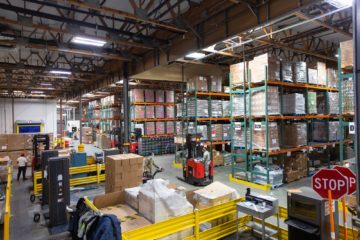By Alexa Kristensen, Grant Writing and Development Intern
Gardening zones provide easy rules to follow in a new garden. The USDA separates the United States into 13 zones, measuring plant viability with temperature indexes. Zone 1 includes cold, northern states while zone 13 includes the hot, southernmost states. Further divided are subzones, with subzone A being cooler than subzone B. Each zone is defined by the region’s annual minimum temperature, giving new gardeners more direction in what plant will be successful in their garden. Understanding your garden zone will protect your garden and optimize plant health. It can also save you money, letting you know whether or not you have the time, resources, or experience to grow certain plants outside their gardening zone.
Unlike states situated in a definitive garden zone, California is home to different garden zones. Northern California and Southern California experience different weather patterns, but California can be further divided by areas in or around the Mojave Desert and Sierra Nevada mountain range. The San Francisco Bay area, for example, is located in Zone 7, while its neighboring Sacramento County region is in Zone 9.
Zone 7 is characterized by its “moderately long” growing season, allowing many different kinds of plants and vegetables to grow easily. Gardening websites recommend that Zone 7 gardeners extend their growing season further by “starting seeds” indoors in order to outwait the first frost. This extends the growing season and allows for two planting seasons, in Spring and Summer.
That said, zones adjacent to each other will allow for some leeway: zone 7 plants, for example, can grow in their adjacent zones with some careful planning and routine upkeep. Veteran gardeners can strategically create microclimates within their gardening zone by using yard structures (a tree or solid fence to block wind or sunlight) to make an area cooler, hotter, dryer, and so on. An example of this is placing a sun-hungry plant in an area that receives near-constant sunlight, even if you live in a cooler year-round climate. Understanding zones and microclimates become even more useful when designing more complex gardens, like a food forest.
Understanding your garden zone will provide a more satisfying gardening experience. While gardening can be difficult and requires patience, it’s not impossible. Gardening zones can help!
Sources:
Michael, John. (2018, October 28). Why Should I Learn Plant Hardiness Zones and Heat Zones? Retrieved from https://ofags.com/why-should-i-learn-hardy-zones-and-heat-zones-for-gardening/
Sunset WesternGarden Collection. (2021). San Francisco Bay Area and Inland. Retrieved from https://www.sunsetwesterngardencollection.com/climate-zones/zone/san-francisco-bay-area-and-inland
Spengler, Teo. (2020, November 9). Tips on Gardening in Zone 7. https://www.gardeningknowhow.com/garden-how-to/gardening-by-zone/zone-7/planting-gardens-in-zone-7.htm#:~:text=When%20you%20are%20planting%20a%20garden%20in%20zone,once%20in%20spring%20and%20again%20in%20late%20summer


0 Comments